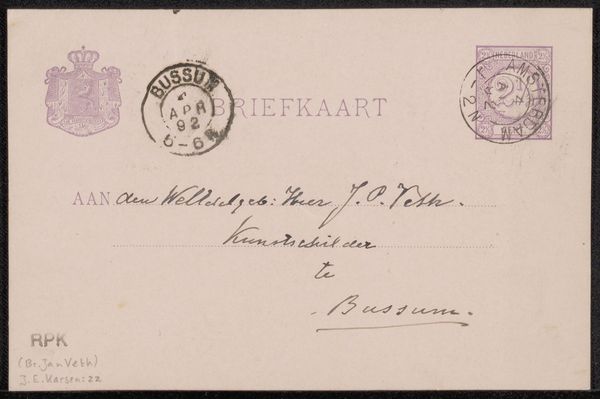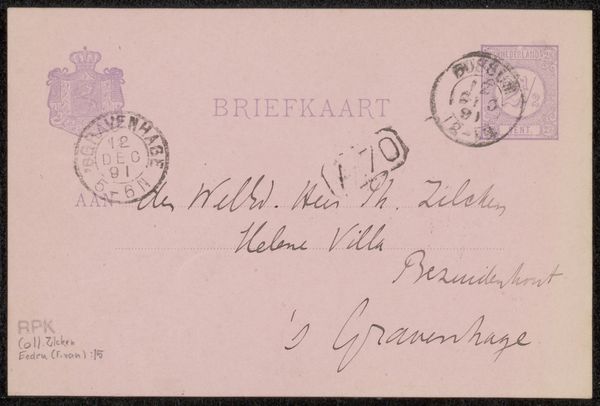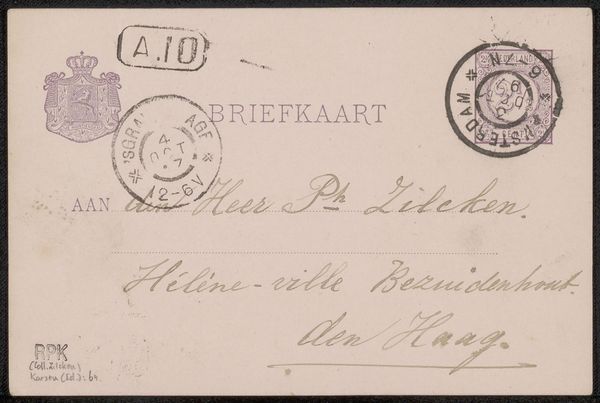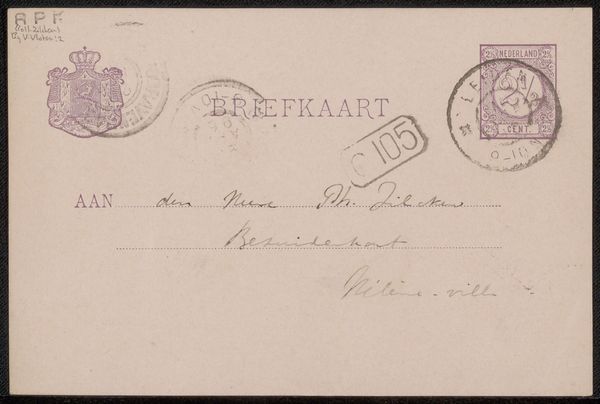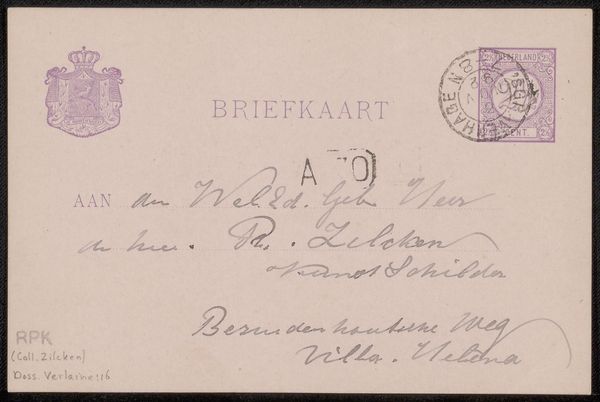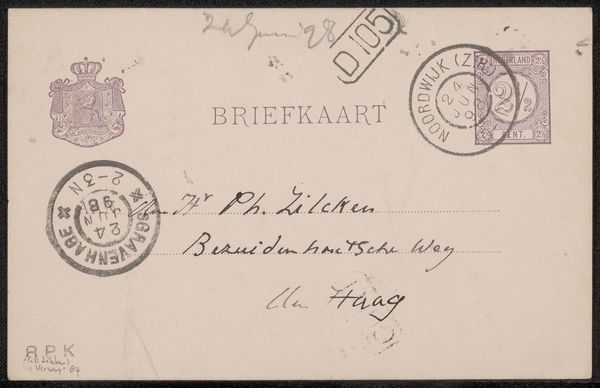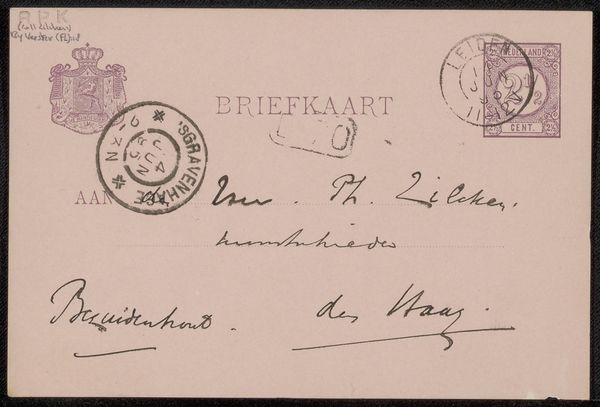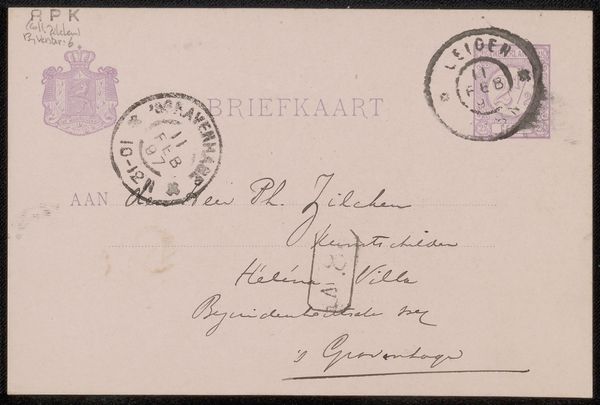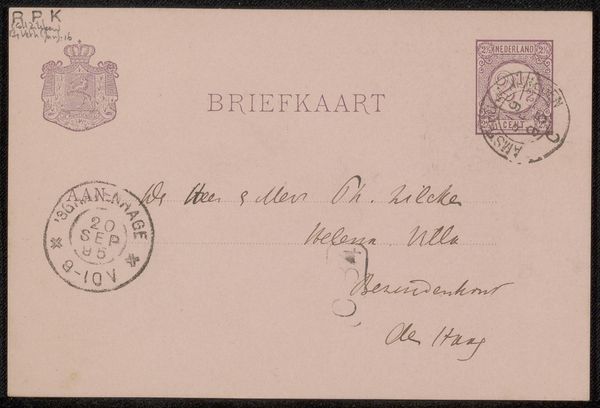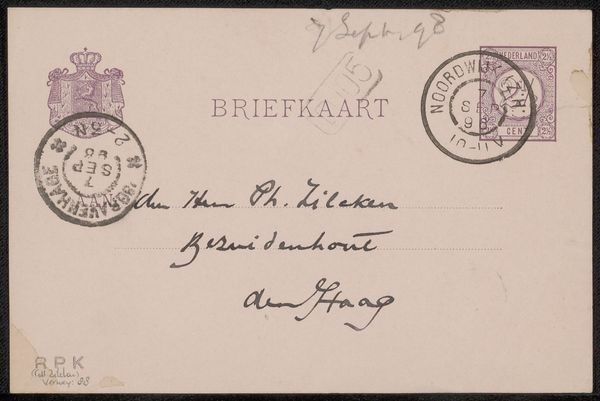
photography
#
pen sketch
#
photography
#
ink drawing experimentation
#
calligraphy
Copyright: Rijks Museum: Open Domain
Curator: This artwork is entitled "Briefkaart aan Philip Zilcken", which translates to "Postcard to Philip Zilcken." It's believed to have been made before 1898 by Émile Durand-Gréville. Editor: It strikes me immediately as delicate, ephemeral, a glimpse into a private moment. The pale hues and almost faded quality contribute to a sense of fragility. Curator: Considering its time, a correspondence like this speaks volumes about social networks and cultural exchange. Think of Zilcken, an artist and critic, receiving this. The postcard wasn’t just a message, it was a social artifact. Editor: Precisely, and from a formal standpoint, observe the arrangement of the stamps and postmarks; they create an accidental composition of sorts, each mark a tiny geometric form. The contrast in textures is also subtle, between the smooth card and the intricate ink impressions. Curator: Yes, it's the materiality, even in this digital form, that resonates. Photography democratized portraiture, but postal systems further democratized personal communication. Letters and cards like this connected individuals regardless of class, forming public discourse through private exchange. Editor: The hand-written script introduces the personal, imbuing this quotidian item with character, softening the harder edged graphical elements of stamps. Semiotics is essential, these stamps stand as the markers of their time in both function and artistic quality. Curator: Indeed. By analyzing these fragments of the past, we access dialogues of identity and intersection, examining these objects within race and class. What could a simple message imply about society? Who had the privilege of sending and receiving, and who did not? Editor: And within those structures of power and access, there still lies an intrinsic aesthetic harmony. Even removed from all societal context it still generates aesthetic appeal. The interplay between precision and informality offers a delightful visual counterpoint, and ultimately demonstrates the unique capacity of human artistic endeavour. Curator: Examining the 'Briefkaart aan Philip Zilcken,' through its layers of time and social context, it tells a story of connection. The postcard represents an intimate dialogue interwoven within the public fabric of society. Editor: For me it reveals something deeper. The balance found between the functional, the expressive, and ultimately the formal qualities allow an entry point to an almost lost past.
Comments
No comments
Be the first to comment and join the conversation on the ultimate creative platform.
